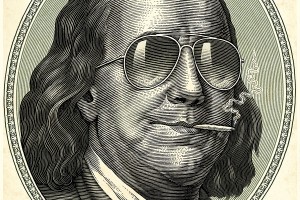The Steve Jobs of Cambridge
 When you think of an iconic technology executive, one who was obsessed with creating beautiful, paradigm-changing products that everyone immediately needed to have, the circuitry of your brain will quickly compute the obvious answer: Apple’s founder and CEO, Steve Jobs. But look deeper and you’ll find that Edwin Land, the founder of Polaroid, was everything Jobs was and would eventually become. In the new book Instant: The Story of Polaroid, author Christopher Bonanos, a senior editor at New York magazine (and, full disclosure, a friend and former colleague of mine), looks at the inventive powerhouse that was Polaroid, and the impact it has on innovation today.
When you think of an iconic technology executive, one who was obsessed with creating beautiful, paradigm-changing products that everyone immediately needed to have, the circuitry of your brain will quickly compute the obvious answer: Apple’s founder and CEO, Steve Jobs. But look deeper and you’ll find that Edwin Land, the founder of Polaroid, was everything Jobs was and would eventually become. In the new book Instant: The Story of Polaroid, author Christopher Bonanos, a senior editor at New York magazine (and, full disclosure, a friend and former colleague of mine), looks at the inventive powerhouse that was Polaroid, and the impact it has on innovation today.
Land, who dropped out of Harvard after discovering a way of polarizing lenses, started Polaroid in Cambridge in 1937. For decades, the company created items used in wartime, providing the U.S. military with products like polarized pilot’s goggles, sights for bomber jets, and aerial reconnaissance photography. After the war, Land knew he’d have to scale back his plants, Bonanos says, but he had one more idea for a product that the hoped would take off. Land had been kicking around this idea for nearly 30 years, after his daughter, then age three, had asked him why she couldn’t see a photo immediately after it was taken.
Land unveiled his first instant Polaroid camera in 1974. “Land’s brilliance had completely invented a field from scratch, nobody else could break in,” says Bonanos. “For 50 years they were able to–through vigorous patent defense and forward thinking–remain ahead of everybody.”
Land was a genius, but he also knew that being in Cambridge was a huge asset, and he routinely had scientists from Harvard and MIT consult with the company, says Bonanos. “Just the fact that there was a Cambridge intellectual community helped Polaroid. The clustering of good minds helped shape invention.”
And it would also help shape another huge technology monolith: Apple. Steve Jobs emulated much of Polaroid’s mystique when creating the company, both through his obsession with design and in his elaborately staged unveiling of products. “Jobs said he modeled Apple on Polaroid, where fine arts meets high tech,” says Bonanos, ‘he called Land a national treasure.” Bonanos discusses the parallels between Jobs and Land starting at the 50 second mark in the video below. The short film he excerpts from Land features a prediction that sounds very much like our present.
Bonanos is in Cambridge this week to promote the book, and will be at the MIT museum tonight for a book party that is open to the public. Selections from the Polaroid archives, which the museum received in 2010, will also be on display.

